Home > Product Installs & Reviews > Product Reviews > Car Subwoofer Reviews > Kicker KMF Series Freeair Subwoofers Review
In this article: We'll unbox and review a brand new KMF Series subwoofer from Kicker and walk you through it's features, specs, our opinion and more.
Subwoofers are one of the first components to fail on your boat's stereo when you're out on the water. They're also one of the critical pieces that round out the sound of your music. So it's important to find a subwoofer that's going to produce the quality sound and bass that you want to make your boat thump on the water, but also withstand the elements.
What is a Freeair Subwoofer?
Freeair subwoofers are designed to sound and work efficiently without the use of a subwoofer enclosure. All they need is a firm mount that will isolate the front of the woofer from the back of the woofer. This could be as simple as a sturdy wall, an MDF board with a cutout, the options are endless. They're especially great in boats because they don't require an enclosure that will take up room on the floor or under a compartment. Simply mount it to a flat, enforced surface and it'll perform perfect.
Because free air subs aren’t meant to be installed in an enclosure, there’s nothing to control cone movement except for the surface that you've mounted your subwoofer to. For this reason, we recommended that you opt for an amplifier which has a subsonic filter to filter out frequencies that are lower than what your speaker can produce. Check out our free air subwoofer defined article for more info.
Unboxing your KMF Freeair Subwoofer
We're usually pretty critical about opening products for the first time in our reviews. We think about how Apple products are packaged – they really set the standard when it comes to product packaging and unveiling. You truly never feel bad when you open up an Apple product. It's the first experience you have with your product, really, and the first opportunity for you to feel or not feel buyer's remorse.
Now, in all fairness we've never seen a subwoofer packaged like a Macbook Pro and wouldn't expect it to be. We'd rather the manufacturers put the money into the quality of the product, or extend the savings to the buyers instead of spending the money purely on packaging & marketing. When we first opened up Kicker's KMF subwoofer, the packaging was heavy, solid and stout. No complaints. But it was really when we pulled the subwoofer out of the box and inspected it that we felt ‘good' about this subwoofer. Looking closely at the KMF sub – the cone, casing, terminals, motor and magnet – the first thing that came to mind was waterproofing and weather resistance. We really felt like we could dunk this thing in a bucket of water and let it play music and it'd be fine (please don't actually do this!). But that's a good feeling to first think of when unboxing a product that's designed for water applications and extreme environments.
Recent Reviews & Articles
We're based in Southern California and the best water is on the Colorado, which also happens to be in the middle of the Mojave desert. Not only do the subwoofers we run have to withstand the incredible amount of power that we push through them for extended periods of time, they also have to withstand 120 degree weather and constant moisture and water. It's pretty crazy to think what we expect these subwoofers to provide, and for how long we expect them to slam for. It's why manufacturers like Kicker make a specific subwoofer for the application. They're not a normal automotive sub – they're special!
In this review, we'll walk through our unboxing of our KMF subwoofer along with some of the key features that make them a good fit for extreme environments.
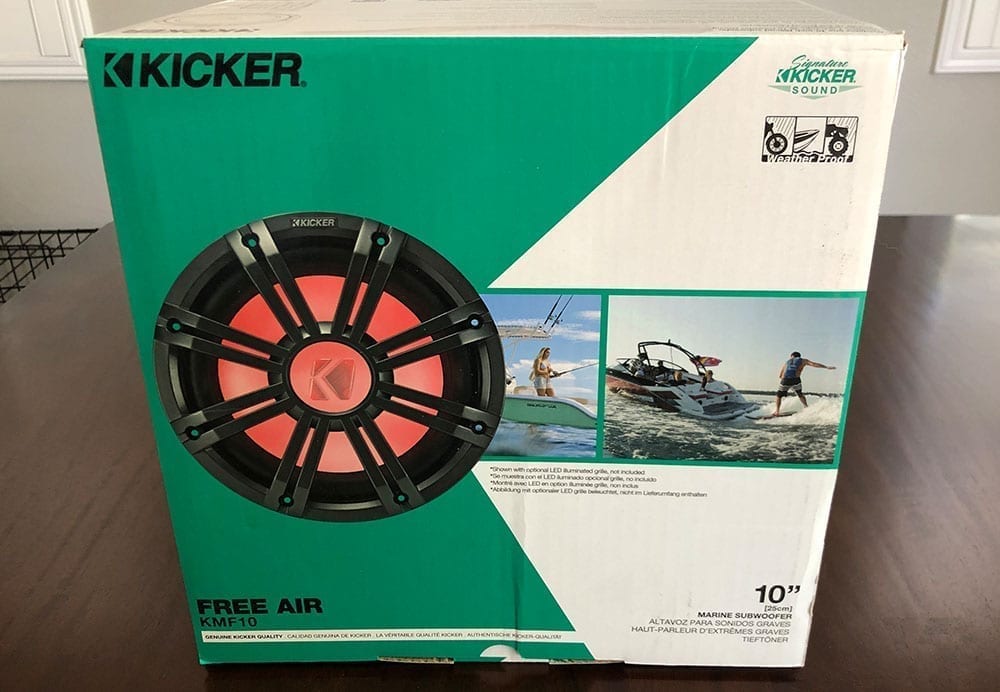
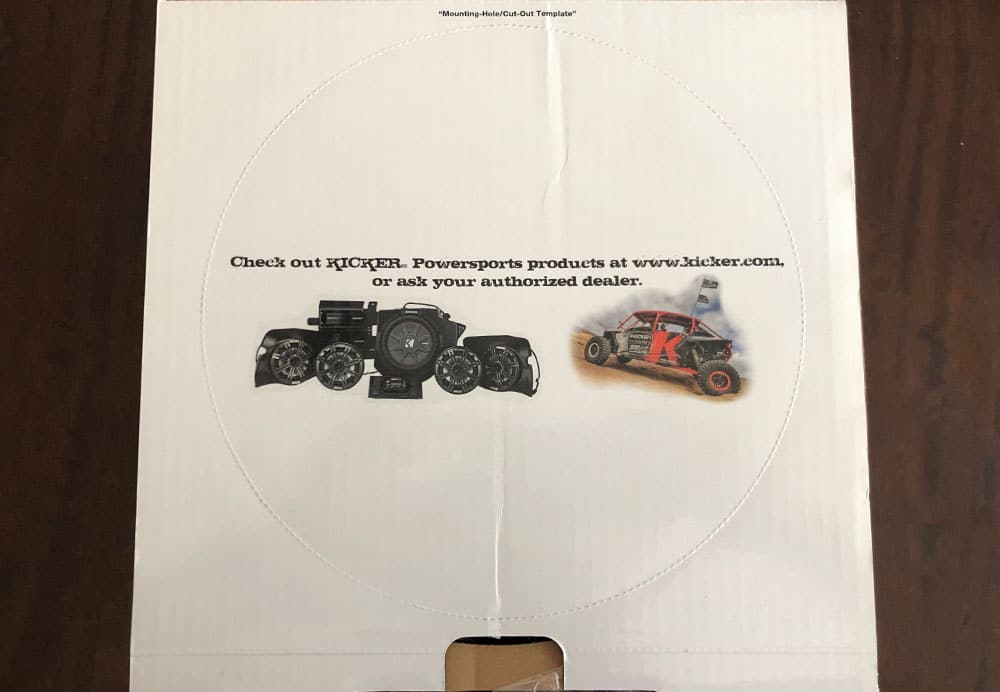
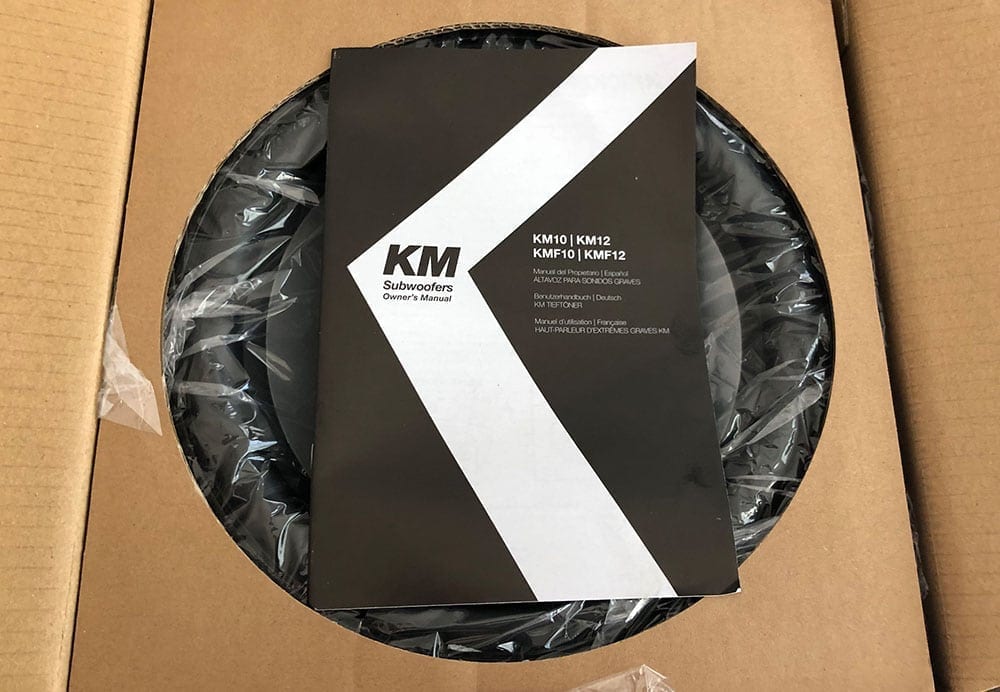
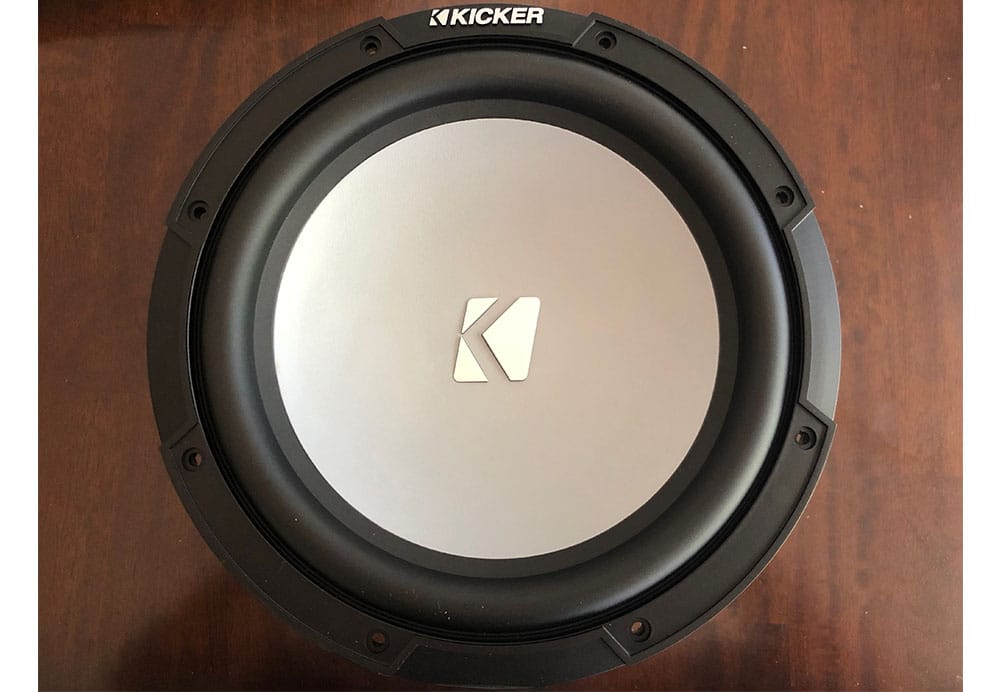
KMF Series Feature Overview
Now that we have the subwoofer out of the box, let's dig into some of the key features that the KMF Series Marine Subwoofers has.
Waterproofing
We mentioned in our unboxing that this was one of the features that really stood out to us. In general, the subwoofers share a lot of similarities with Kicker's KM Speakers in terms of waterproofing and weather resistance. The entire subwoofer looks like it's sealed, and for the most part it is.
The motor structure is completely sealed, including a sealed and locking terminal cover to make your wire connections splash proof and resistant to water spray. The casing is all one piece from the rim to the back of the magnet without which makes it much less likely to absorb moisture and water. Even the terminal connections to the motor and the spider look completely sealed.
Woofer
Looking at the woofer's cone, Kicker used UV-treated polypropylene surrounded by Santoprene. The UV-treated polypropylene helps prevent warping and sun fading, while the Santoprene surrounding is incredibly resilient to heat and can withstand the elements without cracking. Being a freeair subwoofer, these two features are important because your subwoofer is likely to be located in an area that gets sun and has full exposure to all of the elements while being out on the water.
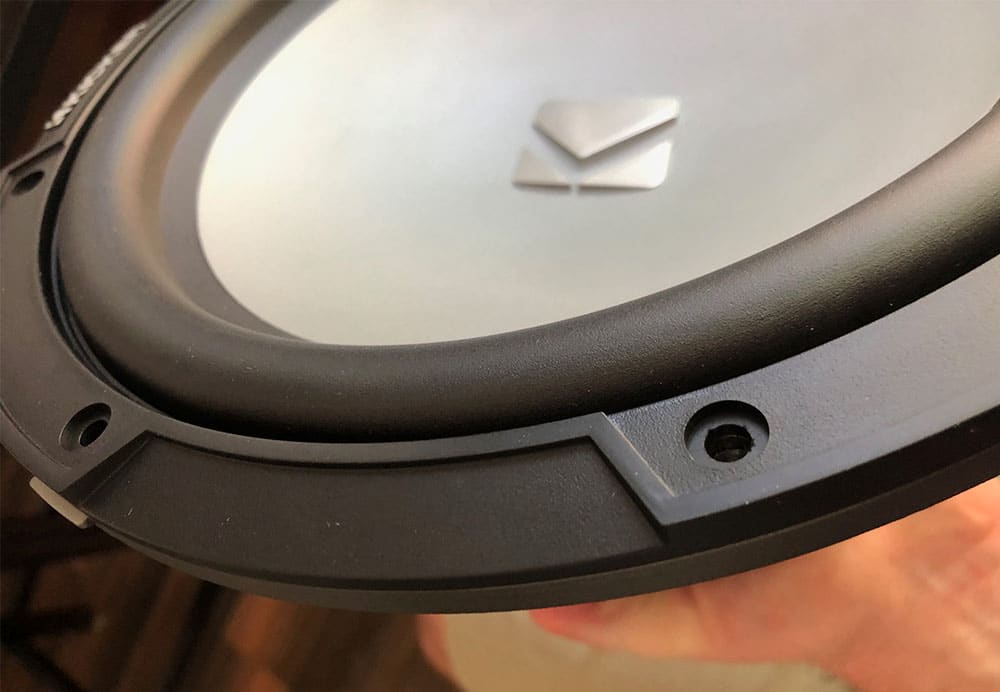
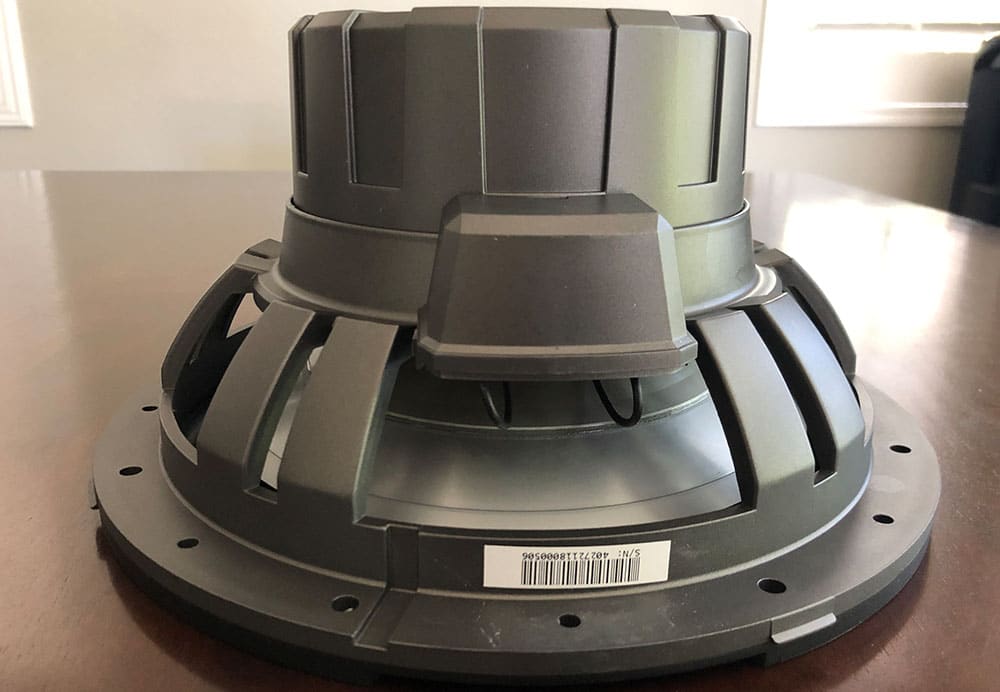
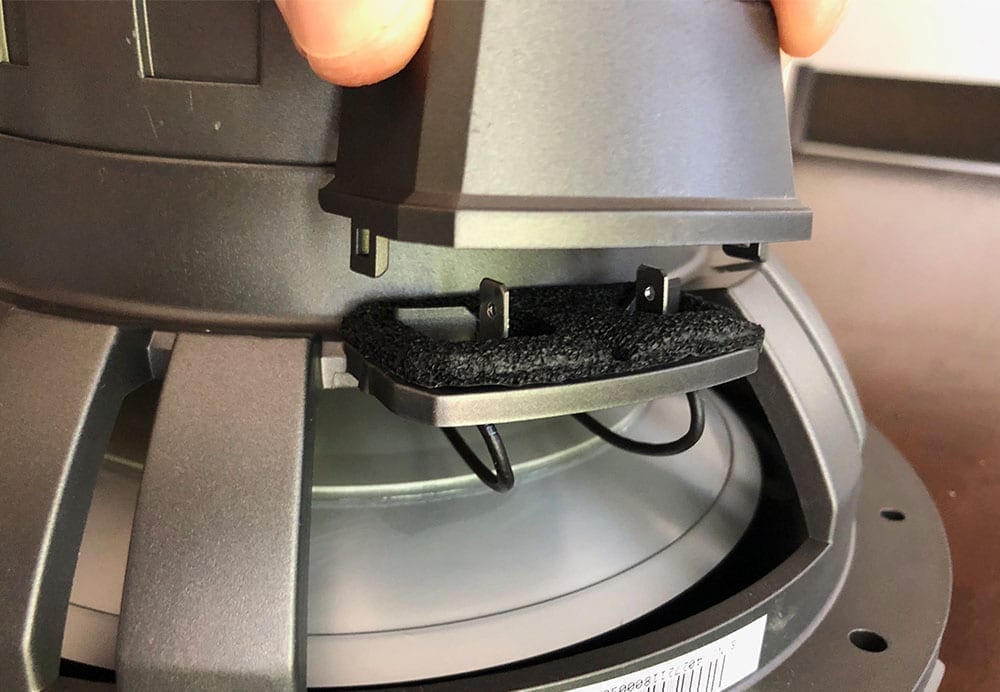
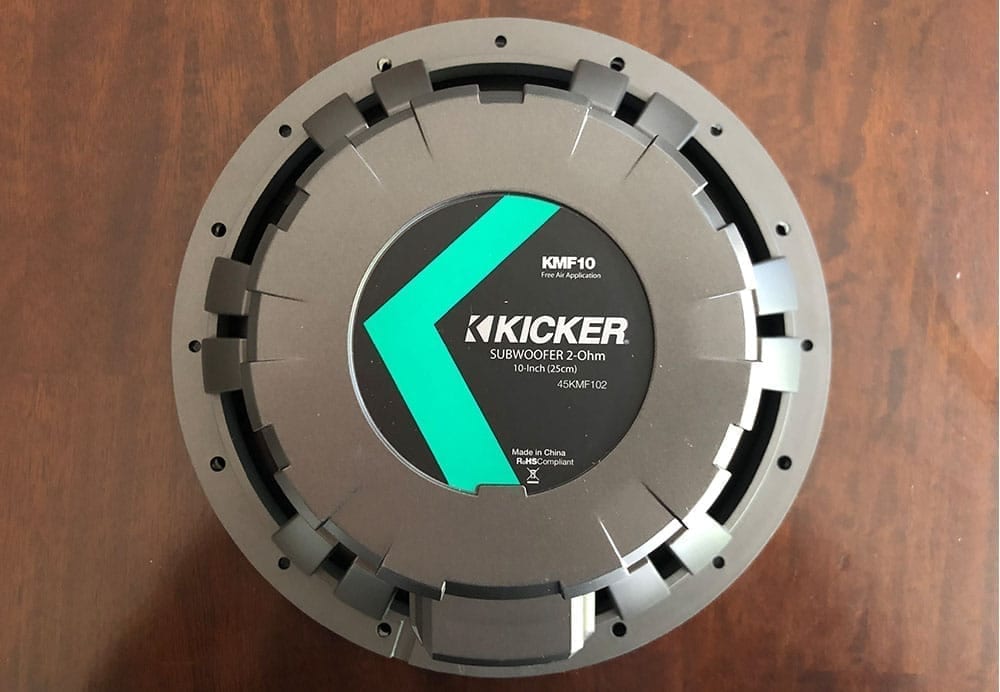
LED Lighting (via LED Grilles sold separately)
One of the really cool features that Kicker introduced for these subwoofers is the LED Grilles. If you're looking to add LED lighting to your boat's interior for your after-dusk cruises you're going to want these. They're designed specifically to fit the diameter of the subwoofer, and they're compatible with the KMLC lighting controller (also sold separately). So if you purchased Kicker's KM LED series marine speakers, this will fit right in and wire straight into the system so that your speakers and subwoofers all match colors and are synchronized.
Similar to the KM LED speakers, to wire the LED lights, you have two options: with or without the KMLC lighting controller. Let's start by walking through the ‘without' scenario. Without the KMLC, like mentioned, you have 7 colors to chose from:
- Red
- Green
- Blue
- Lime Green
- Magenta
- Aquamarine
- Blue-White
You can only really have one color selected at a time without getting really fancy with the wiring (and if this is really what you want you should get the KMLC controller. But it's pretty straight forward – you simply need a positive (switched) and negative wire. The LED wires from the speaker have a power and 3 signal/ground wires and you just combine those 3 signal/ground wires in different ways to make a different color. Here's the manual:
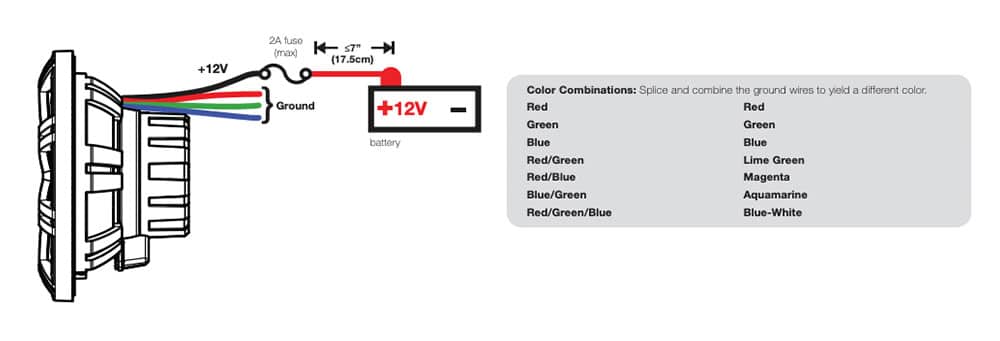
The other option is to purchase the KMLC lighting controller. Like we mentioned, this is also sold separately and the controller essentially upgrades your LED lighting to enable 20 colors instead of 7. It also has lighting modes that will allow you to do things like pulsing, alternating, solid, and beyond. Wiring for this is straight forward, but we would SERIOUSLY recommend that you purchase Kicker's RGB Speaker Wire. It's expensive.. ~$150 bucks for a spool of 150ft, but it has all of the wires you need to wire up your LED speakers, wrapped in a waterproof casing. You'll wire all 6 wires from each speaker and combine all of the 4 LED wires to the KMLC controller at the power source. Then, you have full control over the color and the mode from a wireless remote!
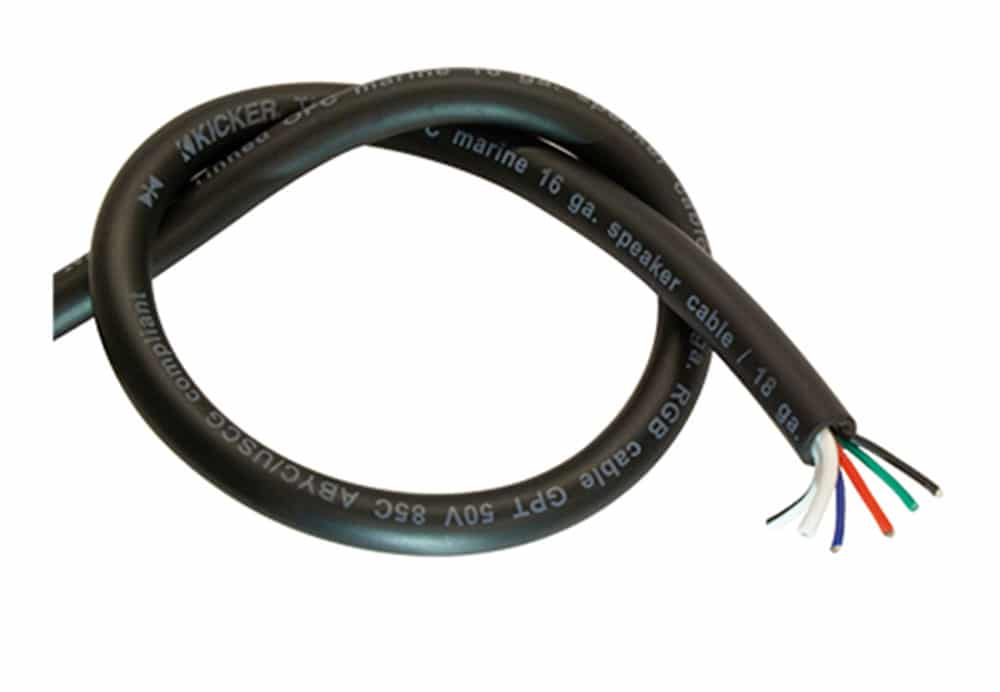
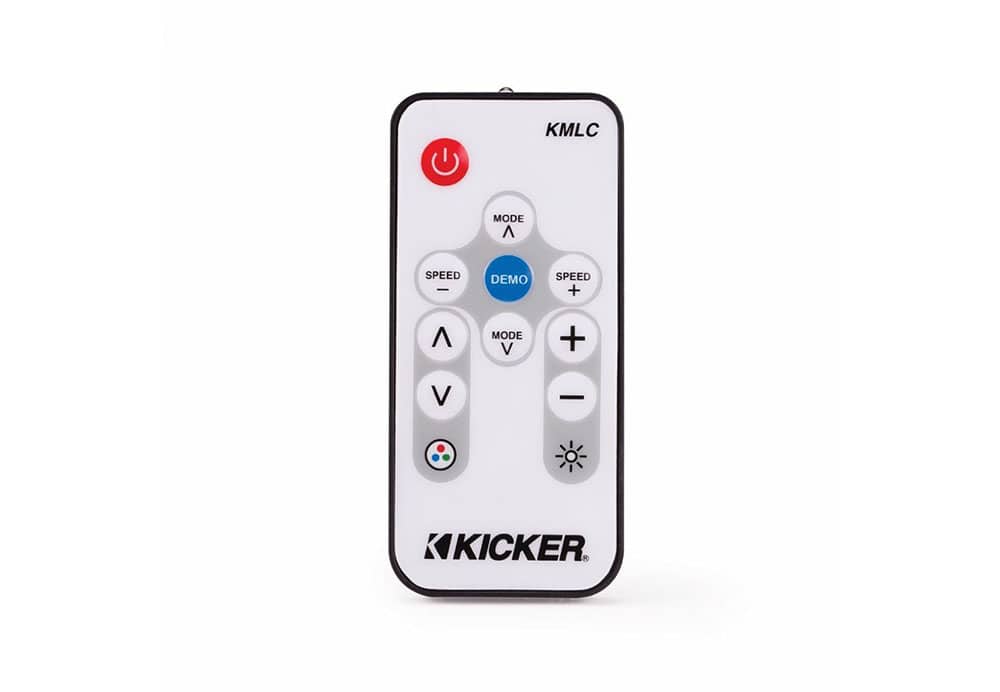
Subwoofer Specs
As always, the specs of any speaker or subwoofer is critical when building your stereo. You want to align the specs of your speakers and amplifiers as best as possible. Here's a few detailed specs about the KMF subs to help you build the best boat stereo.
| 10" KMF102 | 10" KMF104 | 12" KMF122 | 12" KMF124 | |
|---|---|---|---|---|
| Type | Single Voice Coil | Single Voice Coil | Single Voice Coil | Single Voice Coil |
| RMS Power | 175W | 175W | 175W | 175W |
| Peak Power | 350W | 350W | 350W | 350W |
| Ohms | 2 | 4 | 2 | 4 |
| Frequency Range | 30 - 500hz | 30 - 500hz | 30 - 500hz | 30 - 500hz |
Summary & Final Thoughts
We installed two of these KMF subs in a 25ft Lightning (installation article here) and were more than satisfied with the performance. In a free air setting, it's more challenging and less efficient to produce big bass without an enclosure and we thought that these subs did very well. We loved the marine application features and water resistant design too. The LED grilles are a MUST in our opinion and really add a unique look to the subs and also match perfectly if you are going to align them with the KM LED series speakers and KMLC remote. All-in-all, we loved these subs and they were the perfect choice for our setup. They provided plenty of bass without distorting and, after tuning, perfectly rounded out the lower frequencies in our system (the cabin of our boat was surrounded with 4 6.5″ KM speakers to cover mids and highs).
What Makes Them Different?
- Sealed motor structure – we thought they did a great job at designing the motor structure in a way that is truly resistant to the corrosive elements of being on the water and in the extreme heat/elements.
- Other marine-specific features – The terminals have a splash proof cover, the cone is UV protected, the frame is one sealed piece of ABS.
- LED grilles – The grilles are specifically designed to ‘snap' on to these subs and wire directly into the rest of the KMLC system to perfectly synchronize your LED lighting with the rest of the boat.
